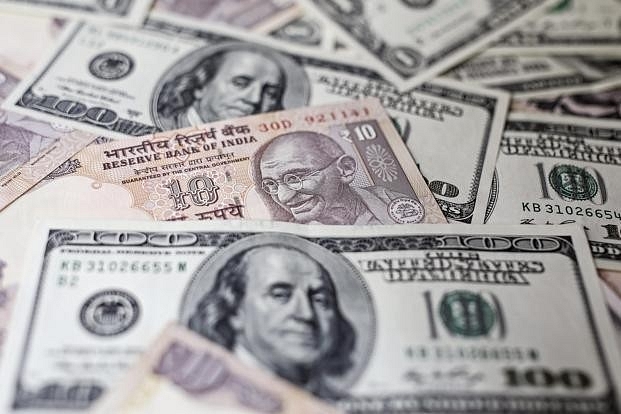
Rupee’s Slide Isn’t Unusual: RBI Should Save The Ammo It’s Using Now For Later
The RBI should not be in any hurry to keep the rupee strong. There is no point frittering away forex resources when no one can predict the right price for the rupee anyway.
Daily headlines screaming “Rupee hits new lows” create panic reactions and are almost as foolish as headlines that talk of “Sensex hits new highs”. In a secular bull run, the markets will hit new highs more regularly; and in an adjustment phase for the rupee, every small depreciation will mean hitting new lows.
India needs to move away from excessive obsession with the level of the rupee-dollar exchange rate since this is proving costly in terms of the Reserve Bank of India’s (RBI) efforts to prop it up. When politicians worry too much about the exchange rate, wrongly assuming that a high exchange rate constitutes validation of their macroeconomic management skills, they will weaken the central bank’s hands by nudging it to intervene and push the rate up. The National Democratic Alliance (NDA) under Narendra Modi has managed inflation and the fisc reasonably well, but the rupee’s rate is not dependent only on this: a lot depends on capital flows, which can be whimsical and petulant.
Given the rupee’s slide to 69 to the dollar the other day, the RBI seems to have been propping it up through hectic dollar sales. Between end-March and end-June, the country’s forex reserves fell by around $17 billion from $424 billion on 30 March to $407 billion on 22 June; foreign currency reserves fell by a similar quantum, from $399 billion to $382 billion, indicating the scale of the RBI’s interventions.
The point is that the central bank should be acting against volatility, and not defending any theoretical value of the rupee, though the Rs 70 mark may well be a psychological turning point.
One should not panic even if the rupee breaches Rs 70, since that psychological trigger point will prompt two-way movements: short-term traders may push it down further in the hope that it will fall further; exporters and non-resident Indians may consider the same level a good vantage point from which to export more to markets abroad or remit more back home.
The sobering reality is that the rupee has been overvalued for a long stretch of time, and some depreciation was written into the script.
As I had noted a few months ago in Swarajya, “Between April-May 2010 and May 2014, the rupee depreciated from around Rs 44 to the US dollar to Rs 58, while in the subsequent four years it depreciated from Rs 58 to Rs 68 (4 July rate: Rs 68.56 around mid-morning). In the United Progressive Alliance (UPA) period, the rupee depreciated 32 per cent while in the last four years it depreciated by just over half that magnitude – that is, even after the recent tumble in the rupee.
“Let us be clear: given inflation differentials between India and its major trading partners, a four-five per cent annual rupee depreciation is normal, though this does not happen evenly every year. The rupee stays flat for years on end, and then abruptly corrects when danger signals appear. What was abnormal was the average 8 per cent depreciation during the last four years of the UPA, which was largely the result of poor inflation management.”
The short point is this. The RBI should not be in any hurry to keep the rupee strong if the natural trend is to rule a bit weak. There is no point frittering away forex resources when no one can predict the right price for the rupee anyway. It all lies in the eyes of the beholder.